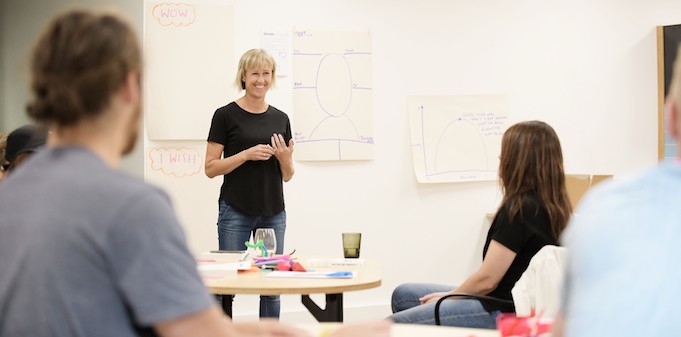
Source: Supplied
Curiosity is a bit like the compelling urge to scratch an itch. It makes us want to seek out more information. It can make us want to find valuable problems to solve in our business.
Behavioural economist George Loewenstein developed the information gap theory of curiosity in the 1990s. He believes curiosity is a critical motive that influences behaviour and arises when we feel a gap ‘between what we know and what we want to know’.
You’re more likely to seek out information if you’re curious about something, because that’s how you ‘scratch your itch’.
In today’s business environment, you often need to search for problems in different places or outside of your current offerings to create a gap between what you know (or think you know) and what you want to know. Being motivated to find and solve your biggest problems is at the heart of innovation. Curiosity is the fuel for inquiry, learning and discovery – it’s critical for organisational growth.
More progressive leaders understand the future belongs to those who are curious. It is how they find their most valuable problems, turning insights into opportunities.
Mercer Pacific’s chief customer officer Cambell Holt, says “curiosity is and always will be a core leadership competency.” Jetstar’s chief customer officer Catriona Larritt, who catches up with a different employee every day, believes “curiosity can start as simply as having conversations. I’m curious about other people. It also helps build connections and solve issues”.
Assess yourself
So just how curious are you right now?
This self-assessment will help you identify what kind of mindset(s) you already have and those you might need to nurture. First, rate yourself on the following questions, using a scale of 0 to 10 where 0 is ‘not at all likely’ and 10 is ‘extremely likely’:
1. REBEL
How prepared are you to go out on a limb and risk a better way of doing things?
2. ZEN-MASTER
How likely are you to be fully present for the task at hand?
3. NOVICE
How comfortable are you when you don’t have all the answers?
4. SLEUTH
How likely are you to notice things beyond the obvious?
5. INTERROGATOR
How prepared are you to ask the hard questions?
6. PLAY-MAKER
How likely are you to use a playful approach when learning?
Now mark your responses for each question on the hexagon, where the centre represents 0 and the outside represents a 10.

Draw a line between each mark and then shade the inside area. This is your unique curiosity footprint. It highlights the mindsets you’re strong on, and those you probably need to work on.
These curiosity mindsets can be used to guide and cultivate your own curiosity, as well as those of others in your organisation.


COMMENTS
SmartCompany is committed to hosting lively discussions. Help us keep the conversation useful, interesting and welcoming. We aim to publish comments quickly in the interest of promoting robust conversation, but we’re a small team and we deploy filters to protect against legal risk. Occasionally your comment may be held up while it is being reviewed, but we’re working as fast as we can to keep the conversation rolling.
The SmartCompany comment section is members-only content. Please subscribe to leave a comment.
The SmartCompany comment section is members-only content. Please login to leave a comment.